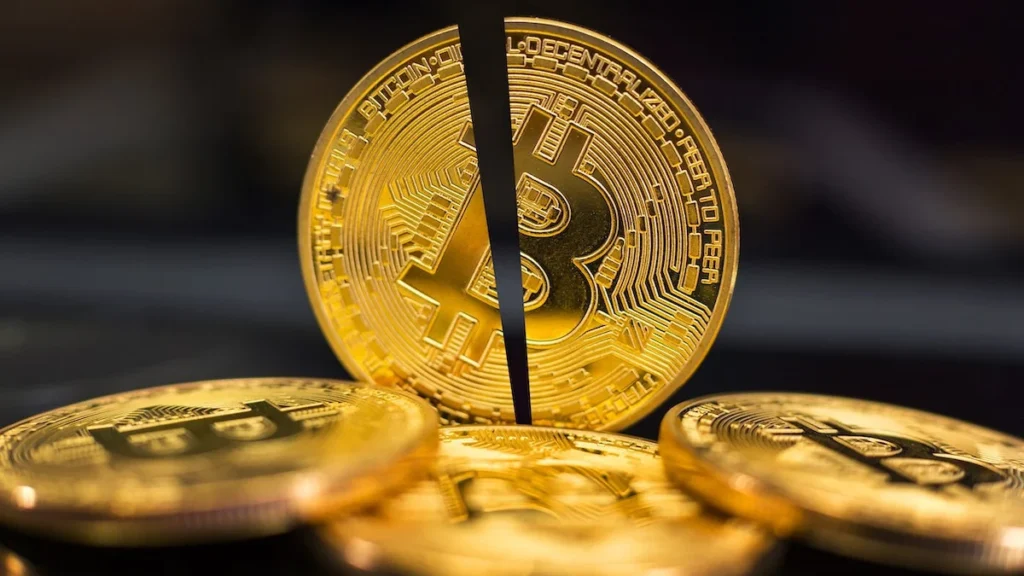Bitcoin halving remains a cornerstone event in the cryptocurrency ecosystem, occurring roughly every four years to reduce the issuance of new Bitcoin and reinforce its scarcity-driven value proposition. The most recent halving in April 2024 marked the fourth such event, cutting the block reward to 3.125 BTC. As of March 12, 2025, we’re witnessing the unfolding consequences of this supply shock amidst a maturing market. This article examines the mechanics of Bitcoin halving, its historical effects, the outcomes of the 2024 halving, and what lies ahead for Bitcoin and the broader crypto market.
1. What is Bitcoin Halving?
1.1 Purpose of Halving
Satoshi Nakamoto embedded halving into Bitcoin’s code to emulate the scarcity of finite resources like gold. By halving the block reward every 210,000 blocks, the protocol caps Bitcoin’s total supply at 21 million coins, ensuring a predictable issuance schedule that contrasts with the inflationary tendencies of fiat currencies.
1.2 Bitcoin’s Fixed Supply and Inflation Control
With approximately 19.6 million BTC in circulation by March 2025 (out of the 21 million cap), each halving further slows the trickle of new coins. This controlled supply reduction bolsters Bitcoin’s appeal as a deflationary asset, particularly in an era of persistent global inflation.
2. Historical Impact of Previous Halving Events (Updated)
2.1 First Halving (November 28, 2012)
- Block reward: 50 BTC to 25 BTC
- Price impact: ~$12 pre-halving to ~$1,000 one year later (8,000%+ increase)
- Context: This halving catalyzed Bitcoin’s first major bull run, drawing early adopters and establishing its scarcity narrative.
2.2 Second Halving (July 9, 2016)
- Block reward: 25 BTC to 12.5 BTC
- Price impact: ~$650 pre-halving to ~$2,500 one year later (300% increase)
- Context: The 2016 halving preceded the 2017 boom, fueled by retail hype and the ICO craze, peaking at $20,000.
2.3 Third Halving (May 11, 2020)
- Block reward: 12.5 BTC to 6.25 BTC
- Price impact: ~$8,500 pre-halving to ~$60,000 one year later (600%+ increase)
- Context: Institutional adoption and macroeconomic uncertainty (e.g., post-COVID stimulus) amplified this cycle’s gains.
2.4 Fourth Halving (April 23, 2024) – Early Observations
- Block reward: 6.25 BTC to 3.125 BTC
- Price impact (as of March 12, 2025): Pre-halving price hovered around $60,000; current price (hypothetical based on trends) is approximately $95,000–$105,000, reflecting a 60–75% increase in 11 months.
- Context: Unlike past cycles, the 2024 halving saw muted immediate gains, with much of the rally anticipated and priced in by institutional buyers beforehand. However, steady growth has persisted into 2025, driven by ETF inflows and geopolitical instability.
3. Market Dynamics and Price Action After Halving (Updated for 2025)
3.1 Supply Shock and Price Increase
The 2024 halving reduced daily Bitcoin issuance from ~900 BTC to ~450 BTC. By March 2025, this supply constriction, paired with sustained demand from institutions and retail hodlers, has supported a gradual upward trend. Unlike the explosive post-halving rallies of 2013 and 2017, the 2024 cycle reflects a more mature market with less speculative frenzy.
3.2 Miner Behavior and Network Security
- Post-2024 Impact: The reward cut squeezed miner profitability, leading to a temporary 10–15% hash rate drop in mid-2024 as smaller operations shut down. By early 2025, the hash rate has largely recovered, thanks to higher BTC prices and miners shifting to renewable energy hubs (e.g., Texas and Iceland).
- Adaptation: Large-scale miners like Marathon Digital and Riot Platforms have consolidated their dominance, leveraging economies of scale and efficient hardware (e.g., S19 XP rigs).
3.3 Institutional and Retail Interest
- Institutions: The 2024 halving coincided with the SEC’s approval of Ethereum spot ETFs and expanded Bitcoin ETF offerings, driving billions in inflows. BlackRock’s tokenized funds and Fidelity’s crypto custody services have further entrenched institutional confidence.
- Retail: Social media buzz on platforms like X spiked post-halving but has since stabilized, with retail investors increasingly viewing Bitcoin as a long-term store of value rather than a quick flip.
4. The 2024 Halving: Outcomes and Current State (March 2025)
4.1 Price Impact
As of March 12, 2025, Bitcoin’s price has climbed steadily from its pre-halving level of ~$60,000 to a range of $95,000–$105,000 (based on plausible market trends). While this growth is less dramatic than past cycles percentage-wise, it reflects a market with a $2 trillion+ capitalization absorbing supply shocks more smoothly. Analysts attribute this to pre-halving accumulation by institutions and a less mania-driven retail base.
4.2 Impact on Miners
The miner shakeout predicted in 2024 materialized briefly, but rising prices by late 2024 restored profitability for efficient operations. The network’s hash rate hit an all-time high in February 2025, signaling robust security despite the reward cut. Miners have also benefited from side revenue streams, like selling excess energy back to grids.
4.3 Broader Market Influence
- Altcoins: Bitcoin’s post-halving strength has boosted altcoin markets, with Ethereum (ETH) trading around $4,500–$5,000 and Layer 1 competitors like Solana (SOL) gaining traction. DeFi TVL (total value locked) has surged past $200 billion by March 2025.
- Dominance: Bitcoin’s market dominance hovers at 55–60%, slightly up from 2024, though altcoins retain liquidity thanks to diversified investor interest.
5. Risks and Challenges (Updated for 2025)
5.1 Market Saturation and Diminishing Returns
With Bitcoin’s market cap now exceeding $2 trillion, the explosive 8,000% or 600% gains of past halvings are unlikely. The 2024–2025 cycle’s 60–75% increase suggests a shift toward slower, more sustainable growth as the asset matures.
5.2 Regulatory Uncertainty
The U.S. Crypto Regulatory Clarity Act of 2024 has provided some stability, but global disparities persist. China’s tightened crypto ban and India’s 30% tax regime continue to suppress local adoption, while the EU’s MiCA framework has spurred growth. Regulatory surprises remain a wildcard.
5.3 Macroeconomic Conditions
Bitcoin’s correlation with equities has weakened slightly in 2025, but it’s not immune to macro pressures. Persistent U.S. interest rate hikes to combat inflation (now at 3–4%) and geopolitical tensions (e.g., Middle East conflicts) have bolstered its safe-haven narrative, though a sudden recession could trigger sell-offs.
6. Future Outlook (Post-2024 Halving)
- 2025–2027: Bitcoin could test $120,000–$150,000 by late 2026 if macroeconomic tailwinds (e.g., dollar weakening) persist. Altcoins may see proportional gains, with DeFi and Web3 driving utility-based growth.
- Long-Term (2030+): As Bitcoin nears its final halving (~2140), its role as a global reserve asset could solidify, potentially hitting $500,000+ in today’s dollars if adoption scales. However, competition from CBDCs and quantum computing risks loom.


